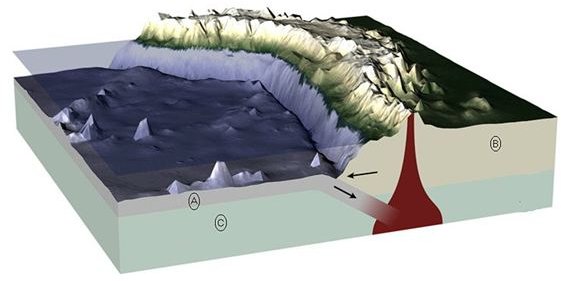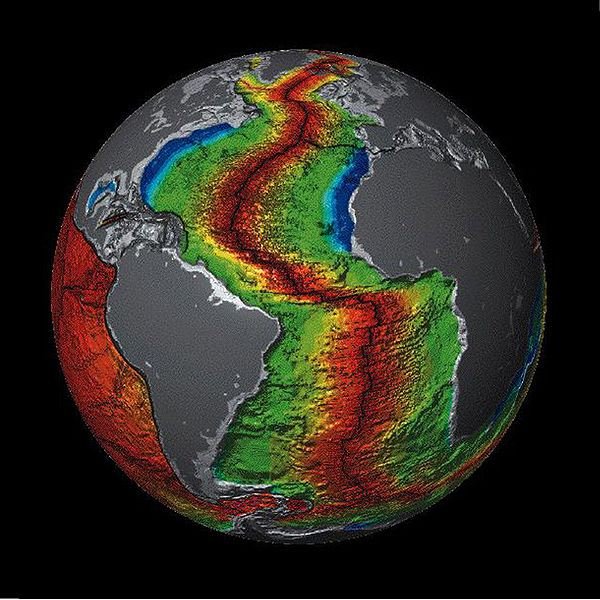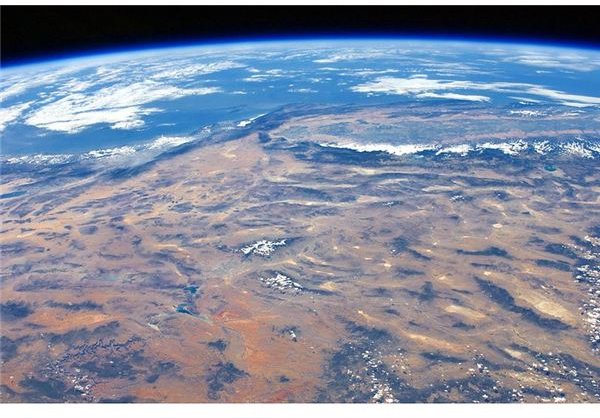What is the Earth's Crust Made Of: Oceanic, Continental, and More
Backdrop of the Earth’s Crust
What is the Earth’s crust made of? The idea of our planet’s crust is relatively a new idea. For example, before the formation of
seismology (that is, the study of earthquakes,) people did not know what lay beneath their feet. Seismologists can gauge what lies buried in the Earth’s crust by measuring how fast sound travels through rock using seismic waves. Usually called “seismic velocity,” seismologists are able to determine certain aspects of the Earth’s crust by measuring how long it takes the seismic waves to travel through certain material as well as return to the surface.
There are primarily eight elements that compose the Earth’s crust; however, there are 84 additional elements in the crust in limited amounts. In addition, modern scientists believe that the Earth’s crust is composed mainly of two types: The oceanic and continental crust.
Elemental Composition of the Earth’s Crust

There are eight elements that comprise most of the Earth’s crust. The first is oxygen (0), which comprises 47 percent of the crust and is usually associated with silicon, which is the next largest element in the crust’s composition. Silicon (Si) comprises 28 percent of the Earth’s crust where it works with oxygen to form silica. Amazingly, silica (Si02) forms almost 75 percent of the crust from its association with silicon and oxygen. The third most common element is aluminum (Al), which makes up about 8 percent of the crust as it is usually partnered with silicate minerals. Fourth is sodium (Na), which is also associated with silicate minerals. Sodium comprises about 4 percent of the crust.
Next are calcium (Ca), potassium (K), iron (Fe), and magnesium (Mg). Calcium and potassium make up about 3 percent of the Earth’s crust and calcium is associated with forming calcium carbonate (with carbon and oxygen). Iron makes up around 4 percent of the crust and is once again linked to silicate minerals, while magnesium makes up only 2 percent. The last remaining percentage is attributed to the 84 other elements at around 1.4 percent.
Continental Crust
The ground you stand upon is known as the continental crust. This type of crust has several deposits that form the

foundation of the crust and vary in age. For example, the oldest foundations are often called basement rock, which are composed of mixtures of several types of rock such as granite and volcanic. It is estimated that some basement rocks are around four billion years old.
After basement rock, there are younger layers called platforms, which are made of sedimentary rocks. When platforms are associated with basement rock, they are called cratons. At the edges of the cratons are the continental margins, which are also made of sedimentary rocks. Continental margins can be moved by tectonic plates and can form natural landforms such as mountain ranges.
How does the continental crust form? When magma moves up from the mantle, it moves through the ground forming volcanoes, which erupt. Through volcanic eruption, the magma that flows out of volcanoes travels into surrounding land or waters where it cools and forms new land.
Oceanic Crust

Oceanic crust is more temporary than the continental crust in that it is produced through mid-oceanic ridges. Like continental crust, oceanic crust is formed by magma; however, it occurs underwater. Oceanic crust has a limited lifespan because when it encounters continental crust, it is pushed underneath the continental where it eventually returns to magma.
The oceanic crust is made of basalt and gabbro rocks. The oldest age for this type of crust is around 200 million years old versus the four billion year old continental crust. In addition to this, oceanic crusts are only around 4.3 miles thick (7 kilometers) as compared to the continental crust, which is between 6 to 43 miles (10 to 70 kilometers) thick.
Like the continental crust, the oceanic crust also exhibits phenomenon such as earthquakes when it encounters other oceanic crusts. Although the studies of oceanic crust are relatively new, scientists think that the oceanic crust is more complex than the continental crust. So what is the Earth’s crust made of? Depending on the type, it can vary dramatically.
References
Sources:
- Pidwirny, Michael. “Formation of the Earth’s Crust.” https://www.eoearth.org/article/Formation_of_the_Earth’s_crust
- Dr. Rodrigue. “Composition of the Earth’s Crust.” https://www.csulb.edu/~rodrigue/geog140/lectures/crustmaterials.html
- Keleman, Peter. “Unraveling the Tapestry of Ocean Crust.” Oceanus. https://www.whoi.edu/oceanus/viewArticle.do?id=2502
- “Seismic Waves.” https://sunshine.chpc.utah.edu/labs/seismic/index.htm
Images:
- National Oceanic and Atmospheric Administration. “Oceanic Crust Sphere Map.” https://commons.wikimedia.org/wiki/File:Oceanic_Crust_Sphere_Map1.jpg
- NASA. “ISS View of the Southwestern USA.” https://commons.wikimedia.org/wiki/File:ISS_View_of_the_Southwestern_USA.JPG
- NASA. “Subducktion.” https://commons.wikimedia.org/wiki/File:Subduktion_int.JPG
- RTC. “O,8.” https://commons.wikimedia.org/wiki/File:O,8.jpg
